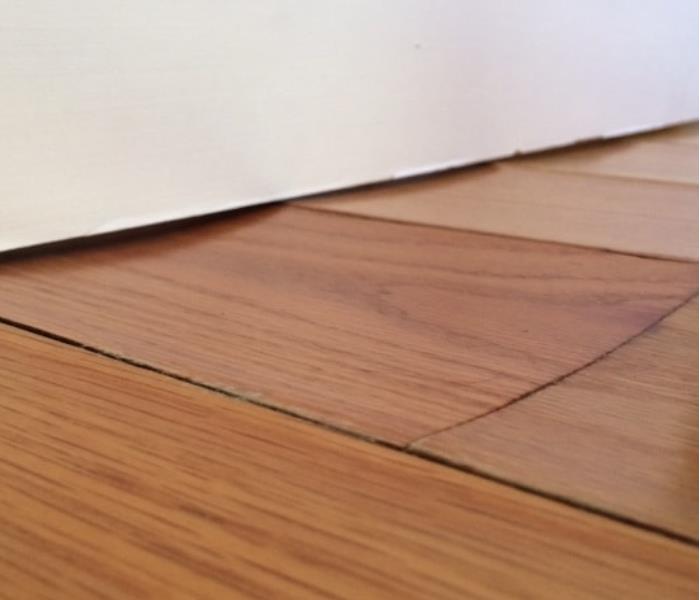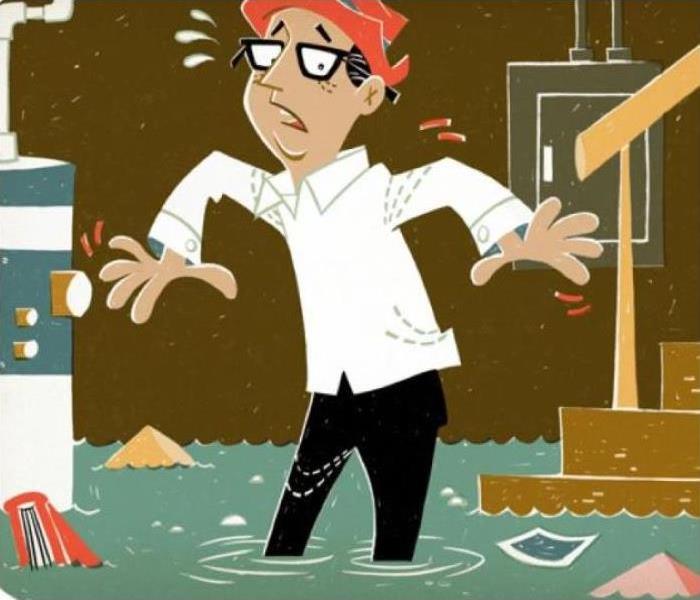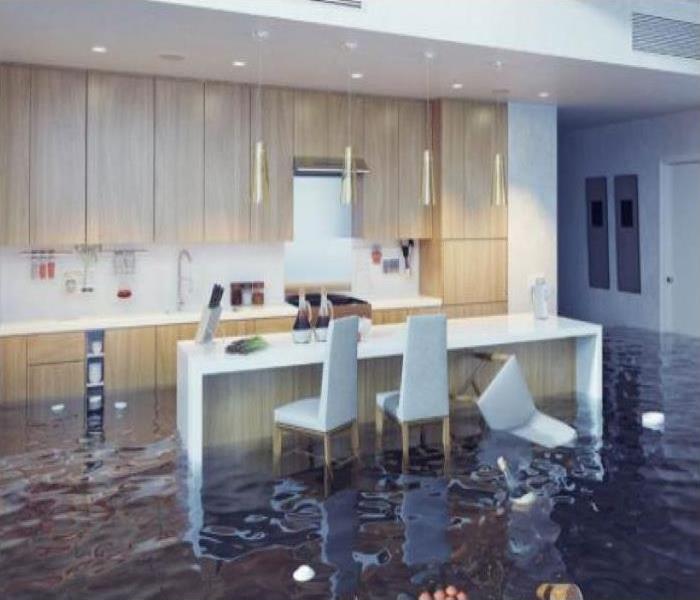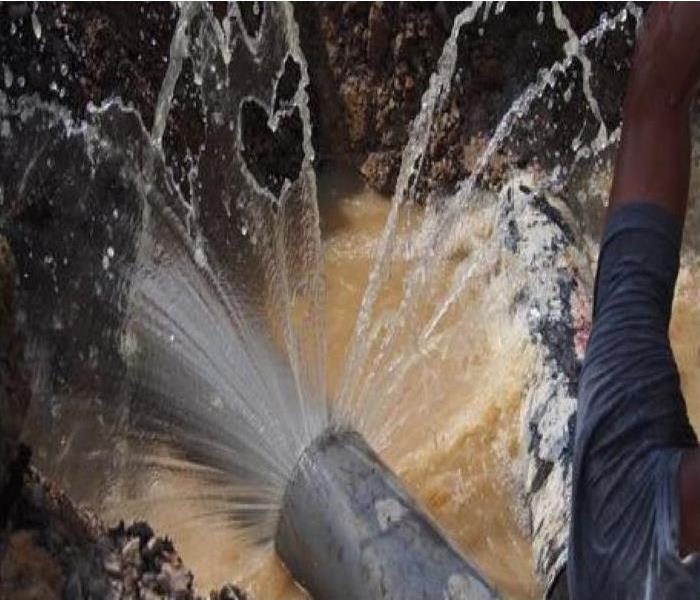Holidays mean vacation!
10/18/2021 (Permalink)
The most common cause of home water damage in the upcoming months are when families leave on vacation. They leave their homes empty for days, weeks and sometimes even months. If there is any kind of leak, even a small one, it'll be left unchecked and can cause a substantial amount of damage by the time someone ever notices. This could be devastating.
In order to prevent water damage while on vacation it's important that you prepare your home against water damage whenever you're leaving it.
Follow these actionable tips to ensure the safety of your home.
- Turn off the main water - shutting off the water main to your house will avoid water pressure from building up in your pipes and weaken the pipes.
- Drain your pipes - Running the faucets in your home will ensure that pipes are relieved of any pressure
- Turn off water heater - Not only will this save you money but prevent any chance of the water heater having a problem.
- Have a friend check your home - so many things can go wrong in your home without having someone present and the best way to make sure it's handled quickly is to have someone checking on your home.
Knowing your water category
10/18/2021 (Permalink)
Different Types of Water Losses
When dealing with an emergency water loss, many people are unaware of the different types of water losses that could happen in their home or business. Knowing the type of water loss help determine the proper drying techniques and designate which damaged materials can and cannot be restored. Water losses fall into three categories: clean water, gray water and black water.
Category 1: Clean Water
This type of water loss comes from a source that does not pose substantial harm. It may include broken water pipes, overflows, and falling rainwater. However, it may not always remain clean after it encounters other surfaces or materials. If left untreated it may become a category 2 water loss.
Category 2: Gray Water
Gray water contains significant contamination and has potential to cause illness or discomfort. Sources include overflows or broke pipes contaminated with chemicals or microorganisms.
Category 3: Black Water
Category 3 water loss is grossly contaminated and may contain harmful agents. This type of water loss carries silt, organic matter, heavy metals, and toxic substances that create black water. With a black water loss, most materials may be removed and properly dispose.
*If you're unsure, call SERVPRO, today. We will dispatch our certified technicians to guide you through the process.*
Avoiding pipe bursts before they happen
10/13/2021 (Permalink)
Pipe bursts are some of the most common causes of water damage. Small changes can prevent a buildup of damage to your pipes over the years. Here are some tips to keep your pipes from getting damaged and to protect your home from water damage.
- Consider a water softening system. Hard water can cause significant damage to your pipes over time. Early signs of hard water in your home is if your coffee maker has clogs and gives out earlier than expected. This is due to a high mineral content in the water. A water softening system will lower the hardness in the water and reduce the amount of minerals that can adhere to your pipes.
- Install a pressure regulator. A pressure regulator will help you detect problems in your water supply before any serious damage can occur. High water pressure is one of the most common causes there is of pipe damage. Increased clogs or mineral adherence will cause the pressure to increase in your pipes and can lead to bursting. Contact your local plumber if your pressure appears to be high.
- Insulate your pipes. Insulated pipes will help prevent freezing in the winter. If water freezes in your pipes, the pressure builds up and can cause a pipe burst.
If a pipe burst does occur, SERVPRO of Wilmington / Lomita / S. Harbor City is here to help! We will help clean up your water damage of any size.
Can a Tankless Water Heater Limit the Potential for Water Damage?
2/3/2021 (Permalink)
 A hot water heater issue in your home can become a bigger issue than most realize. Let SERVPRO help you through.
A hot water heater issue in your home can become a bigger issue than most realize. Let SERVPRO help you through.
SERVPRO techs know plumbing issues can arise with any device and have the skills and equipment to get the water out of your Wilmington home
The average service life of a hot water heater in a Wilmington home is around eight to twelve years on average. If the tank fails, it can dump a sudden thirty plus gallons of water in your home. Once free of the tank, the water spreads and migrates down and seeps under floors, affecting floor joists and can penetrate under the foundation in some cases. Tankless water heaters have some definite perks such as:
- They do not require a tank to hold the hot water for use
- Minimal potential for a catastrophic water damage event
- No waiting for the water to heat up; it arrives hot
- Uses 30% to 50% less energy for hot water since no tank needed
What is the Best Way to Get Rapid Water Removal?
After a large scale damage event in your Wilmington home requires water removal, the best action a homeowner can take is to bring in outside help. SERVPRO techs have multiple types of equipment to get the water out of your home quickly. A mere inch of water can do numerous types of damage to your home in a short period, including:
- Destruction to carpet and tile flooring
- Water may cause the carpet to shrink, deteriorate, or dyes to bleed
- The subfloor may warp due to seepage and require replacement
- Sheetrock may buckle or fall apart after wicking water
Commonly Seen Cleanup Needs for a Home
When SERVPRO techs work on a home post-water tank failure, there is often a lot of water to extract. Fifty gallons of water does not look like so much when it is sitting compressed in the tank. It can seem overwhelming about where to start the cleanup. Some actions homeowners can take before the arrival of the crew is to remove items off the wet floor such as magazines in baskets, decorative pillows, and porous items that can absorb water or have the potential to bleed inks or dyes onto carpet or laminate flooring.
The flooring of all types takes a beating after a water spill of this size in a home. SERVPRO techs have comprehensive training in handling damage from water for all kinds of flooring, and they know after inspection if your floor covering has restoration potential or not.
Laminate flooring, particularly on floating floors, fares poorly when exposed to copious amounts of water. This is due to the composition of most of the floorboards, having a melanin and fiberboard core. Once it has excessive exposure to moisture, the fiberboard swells and causes deterioration for the board. Usually, this type of flooring needs removal and replacement after a massive water damage issue.
Ceramic and laminate (resilient) tile usually have two very different outcomes. While ceramic tile has one of the best potentials for a full restoration, if the grout line seal remains intact, laminate tile may float up and off when the adhesive loses its grip.
Since a water tank cleanup has a rating as a clean water restoration job, as long as the cleanup starts within 24 hours, the water poses no hazards, and on a case by case basis, the techs can extract the water from the carpet and dry it in place. This is usually welcome news to homeowners who have an investment in their wall-to-wall carpeting.
Wood floorboards react differently to water as even sealed boards still naturally absorb some water resulting in bowing or crowning. Until the boards get dried, there is no way to gauge the true restoration potential. Often with the use of drying mats, the boards return to their original shape, although in some cases, they may need refinishing.
Once the property dries, the techs use their equipment to ensure that there are no areas of moisture that got missed. They look for:
- Cold areas indicating moisture behind walls as seen through the use of infrared cameras
- The use of penetrating probes to determine if any water remains within the subfloor
- Interior humidity readings to ensure drying goals got attained
After the water gets extracted and the work-site dried, SERVPRO techs work on manual cleaning and prepping the area for any needed repairs. The Crew Chief walks the homeowner through the actions taken and goes over any controlled demolition that needed to occur for drying. Homeowners get encouraged to ask any questions, so everyone is on the same page when the restoration services get completed.
SERVPRO of Wilmington / Lomita / S. Harbor City at (424) 263-9065 when you need assistance with water removal in your home. The technicians have the training and equipment to make the damage to your home, "Like it never even happened."

 24/7 Emergency Service
24/7 Emergency Service



